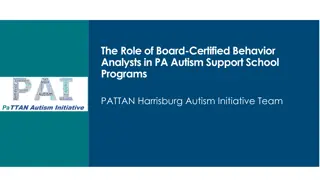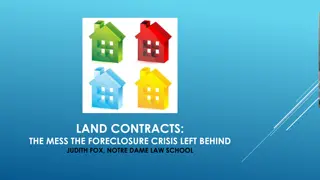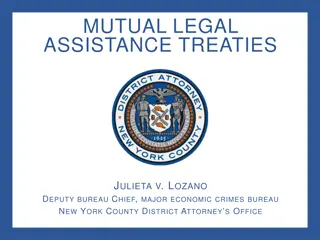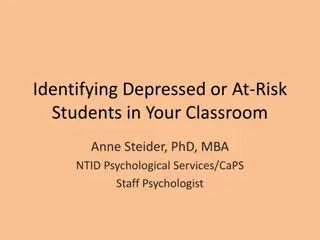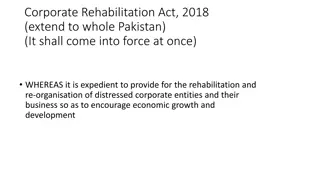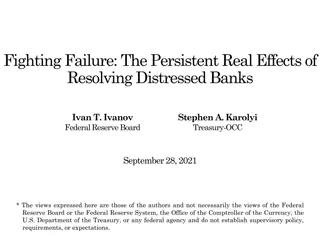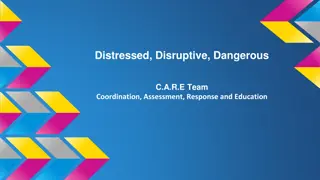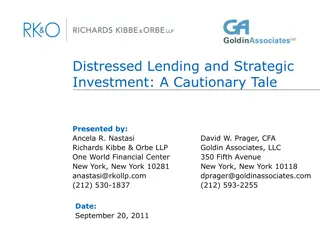Supporting Distressed Students: Strategies for Assistance
This resource delves into identifying signs of distress in students, establishing a care team to aid those at emotional risk, and providing guidance on how to respond effectively. It emphasizes the importance of recognizing emotional, cognitive, and behavioral cues, and offers practical advice on handling such situations with sensitivity and empathy.
Download Presentation

Please find below an Image/Link to download the presentation.
The content on the website is provided AS IS for your information and personal use only. It may not be sold, licensed, or shared on other websites without obtaining consent from the author.If you encounter any issues during the download, it is possible that the publisher has removed the file from their server.
You are allowed to download the files provided on this website for personal or commercial use, subject to the condition that they are used lawfully. All files are the property of their respective owners.
The content on the website is provided AS IS for your information and personal use only. It may not be sold, licensed, or shared on other websites without obtaining consent from the author.
E N D
Presentation Transcript
PUTTING THE PIECES BACK PUTTING THE PIECES BACK TOGETHER: HOW TO HELP A TOGETHER: HOW TO HELP A DISTRESSED STUDENT DISTRESSED STUDENT Gary Petiprin, Ph.D. Counseling Center Director Shawna Dellecave, M.A. Case Manager
Defining the problem Disruption Distress Threat
Response Process Disruptive Distressed Threatening Counseling Redirect Campus Center Security Dean of Students Care Team
Care Team Purpose: identify students at emotional/ health risk; coordinate efforts to support students; assess levels of potential threat Function: meet bi-weekly and identify plan of action and monitor situation Process: any member of team may be notified about student of concern; communicates concern to other members
Care Team Members Leslie Maxie-Ashford Elizabeth Cassady Shawna Dellecave Gary Petiprin Alice Kimble Ronda Purdy Joseph Frye Jim Breslin
Signs that a student is distressed Emotional Reactions exaggerated or disproportionate Chronic sadness, anxiety, anger Cognitive Decline in focus or performance Bizarre or irrational thoughts Statements of aggression, hopelessness, worthlessness Behavioral Sudden shift in behavior Poor hygiene/disheveled I solation/withdrawal
Examples Student writes about traumatic event in her past Student gets angry during discussion, yells, and storms out of class Student begins crying while meeting with you Midway through semester, student begins looking tired in class, stops participating, and Student writes reflection paper about feelings of suicide Others
What notto do Ignore Minimize Try to fix Panic Make false promises
What to do Meet privately Express concern Remain calm & patient Use reflective listening Be empathic Instill hope but be realistic Connect to resources
Referral to Counseling Center Emotional issues are impacting functioning not going to class harming relationships not sleeping or eating well problems with concentration Issues are chronic (repetitive or prolonged) Potential harm to self or others In crisis Needing or desiring confidentiality
Making a referral Ask about their openness to counseling Explore thoughts and attitudes about counseling Provide basic information and correct any misconceptions Confidentiality Fees Staff Offer to call from your office (x8480) Offer to escort to first visit Follow up Call us for guidance and visit our web site: www.bellarmine.edu/studentaffairs/counselingcenter


